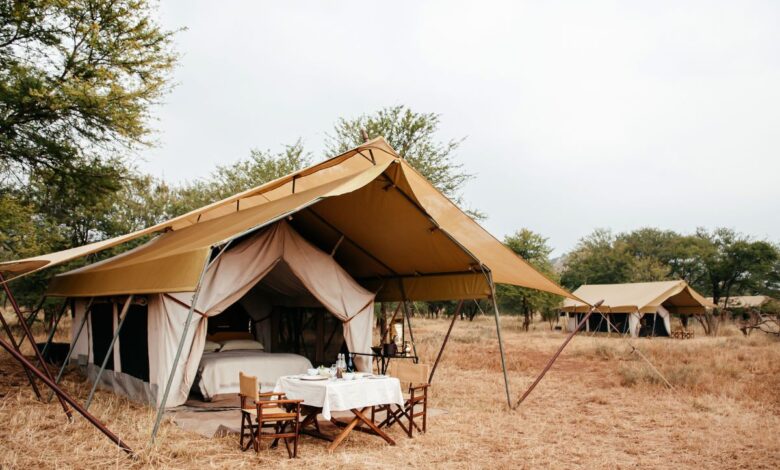7 Residential Uses And Applications Of Fabric Structures

Innovations in engineering have led to more convenient and economical solutions in construction. Unconventional buildings like fabric structures are incredibly useful across industries. Nowadays, manufacturers also offer designs suitable for residential applications.
Fabric structures are weather-resistant buildings made from waterproof and durable textile and metal framing usually made with galvanized steel or aluminum. These have a lower environmental impact than conventional brick-and-mortar architecture. Plus, they’re more cost-effective, making them an excellent choice for residential uses.
That said, here are seven residential uses and applications of fabric structures.
-
Worker’s Temporary Quarters
Fabric structures are efficient for residential building projects. Construction companies provide temporary quarters for workers on site to keep them safe at work. During breaks, they can safely enjoy their meal and rest in a comfortable space.
One benefit of using fabric structures for construction projects is they’re quick to build. Installing them on-site can take as fast as one day and even quicker for smaller designs. When the project is done, you may disassemble and reuse them on other sites.
-
Low-Cost Housing
The housing crisis affects many countries due to a sudden spike in the prices of properties. As a solution, many aspiring homeowners search for economical options to avoid burdensome mortgages. Aside from tiny homes, other low-cost housing alternatives are fabric structures or yurts.
Although most fabric buildings are for industrial use, some manufacturers offer designs suitable for full-time living. These fabric structures have everything a typical home has such as insulation, electrical wiring, plumbing, and an HVAC system. Some models even have skylights to efficiently maximize sunlight during the daytime.
Moreover, fabric structures have a high-tensile strength, suitable for locations prone to typhoons, blizzards, or earthquakes. Despite being lightweight, it can withstand harsh weather conditions. You can sleep comfortably just like in a conventional house.
-
Residential Storage
Whether you live in a small or large house, you’ll need an ample amount of storage. Most houses don’t have enough space for bulky items. As a solution, you may build a fabric structure in your backyard solely for storing your belongings.
In most houses, a separate shed in the yard is enough to store miscellaneous items that don’t fit in the house. However, a typical shed is made of wood and commonly lacks insulation. Fabric structures are a better alternative since they can provide more protection against outdoor elements.
-
Modular Home Office
After the pandemic, many have switched to a work-from-home arrangement. While it’s convenient to work in the bedroom or living room, it’s not for everyone. Some prefer a separate office to improve focus and productivity. If you don’t have a spare room in your house to convert into an office, the next best thing is to build a modular one.
Fabric structures are perfect for building a modular home office within your property. You can install it right beside your home or any available space in your yard. It’s the best solution to create a boundary between your career and personal hobbies.
-
Home Workshop
Everyone needs a designated area for their hobbies, especially for those that require large materials and tools like woodworking. Fabric structures make an efficient and practical alternative if you want to convert some space into a studio or workshop. Since they’re equipped with electrical connections, you can effortlessly plug in your power tools and start working.
Having your workshop at home is very convenient. You don’t have to drive to a studio to start your day. You can build your shop in your yard with a fabric structure you can quickly assemble. It’s also a great way to future-proof your property. And if you want to move to a different house, you can dismantle it and reuse, recycle, or sell it.
-
Additional Garage
Sometimes, the changes in your lifestyle drive you to outgrow your own home. Over time, you may need a larger garage to park more cars. Since moving to a bigger home isn’t quick and simple, you can add a temporary carport to accommodate your needs.
Fabric structures are suitable for storing vehicles of various sizes. These buildings are commonly used as hangars and garages for vehicles across different industries. You can surely find a fabric building design with the perfect floor area and height to serve as protection for a car, boat, or any other vehicle.
-
Short-Term Accommodation
Short-term home rental is a growing industry. Many choose to offer their own homes as accommodation for travelers to earn passive income. If you’re looking for a structure that’s affordable and easy to build, a fabric building is an excellent choice.
You can easily transform a fabric structure into a homely and cozy space. It can be built even in a remote location since it’s lightweight and comes in modular pieces. It’s a practical option for those who want to build a bed and breakfast accommodation on the beach or in the countryside.
Conclusion
Fabric structures provide flexible and reliable options for various residential uses. This innovation in architecture and engineering has given solutions to common construction challenges.




